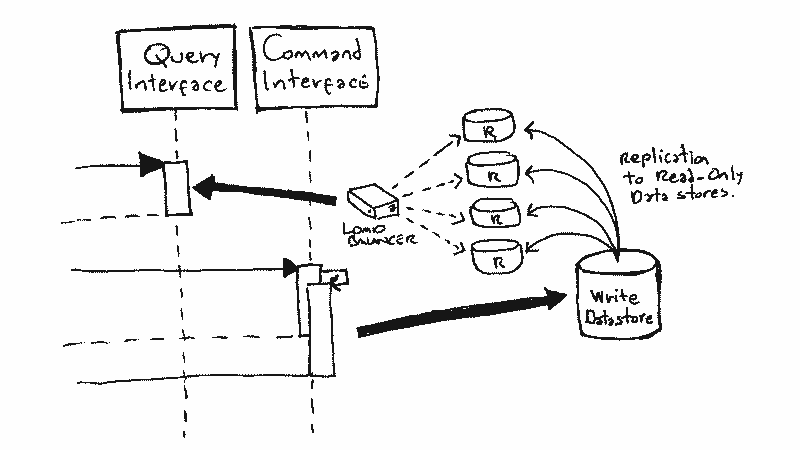Command and Query Responsibility Segregation (CQRS)
Command and Query Responsibility Segregation (CQRS) is an architectural pattern that separates the read and write operations of a system by…

Command and Query Responsibility Segregation (CQRS) is an architectural pattern that separates the read and write operations of a system by creating two separate models: one for commands (writes) and one for queries (reads).
The idea behind this separation is to address the concerns of different aspects of a system independently, which can lead to better performance, easier maintainability, and greater scalability.
Commands are responsible for changing the state of an object, while queries are responsible for retrieving the state of an object.
In a CQRS-based system, commands and queries are handled by separate components or subsystems, which allows each to be optimised for its specific use case.
Benefits of CQRS
- Improved performance: By separating read and write operations, optimising each side independently is possible. For example, the read model can be designed for high performance and availability, while the write model can focus on consistency and validation.
- Scalability: With the separation of concerns, it’s easier to independently scale the read and write sides. For instance, if an application receives a high volume of read requests, it can scale the read model without impacting the write model.
- Maintainability: Separating the responsibilities of reading and writing can lead to simpler, more focused components, making it easier to understand, maintain, and evolve the system over time.
- Flexibility: The separation of read and write models enables different data representations for different use cases, allowing developers to tailor the data model to fit each operation's needs best.
Drawbacks of CQRS
- Increased complexity: Implementing CQRS can add complexity to a system due to the need for additional components, synchronisation between the read and write models, and handling eventual consistency.
- Eventual consistency: As the read and write models are separate, they may not always be in sync, leading to a period of eventual consistency. This can be challenging for some use cases where immediate consistency is required.
Example: Implementing CQRS in an E-commerce System
Let’s consider a simple e-commerce system to illustrate the implementation of CQRS. The system has two main operations: placing an order (write) and viewing order details (read).
- Command Model: The command model is responsible for processing orders. A command is created and sent to the command handler when a user places an order. The command handler validates the order, updates the inventory, and saves the order in the write database. It can also publish an event to notify other services about the new order.
- Query Model: The query model provides order information to users. When a user requests order details, the query handler retrieves the data from the read database, optimised for fast retrieval of order information.
- Eventual Consistency: To keep the read and write models in sync, an event listener listens for order events published by the command handler. When an event is received, the event listener updates the read database accordingly.
In summary, CQRS is an architectural pattern separating read and write operations so developers can optimise each side independently and tailor data models to best fit the needs of each operation.
However, CQRS may only be suitable for some applications, as it can introduce complexity and eventual consistency challenges.
When considering the implementation of CQRS in your application, it’s essential to carefully analyse the specific requirements of your system and weigh the benefits against the drawbacks.
In systems where the read and write operations have significantly different characteristics or where scalability and performance are critical, CQRS can be a highly effective architectural pattern.
However, the added complexity may not be justified for smaller systems or those with less demanding performance requirements.
Follow me on Medium, LinkedIn, and Twitter.
All the best,
Luis Soares
CTO | Head of Engineering | Cyber Security | Blockchain Engineer | NFT | Web3 | DeFi | Data Scientist
#CQRS #command #query #scalability #software #architecture #data #design #patterns #application #softwaredevelopment #softwareengineering #backend



